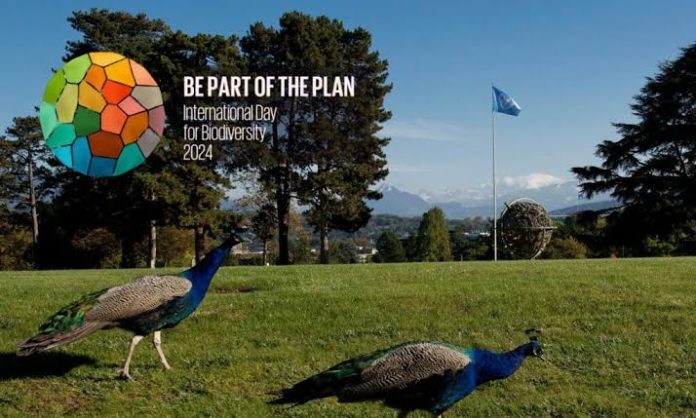Facebook Twitter (X) Instagram Somali Magazine - People's Magazine
A new chapter in global environmental governance is taking shape as the Bern Process gains renewed traction across major multilateral environmental agreements (MEAs). On June 25, 2025, the UN Environment Programme (UNEP), in collaboration with the Convention on Biological Diversity (CBD) Secretariat, Mexico, Sweden, and Switzerland, held a landmark webinar showcasing how the Bern Process is driving cross-convention cooperation to implement the Kunming-Montreal Global Biodiversity Framework (GBF). Launched in 2018, the Bern Process began with just eight biodiversity-related conventions. Today, it spans 16 MEAs covering biodiversity, climate change, pollution, and desertification—unifying fragmented environmental efforts under a shared commitment to collaboration.
Moderated by UNEP’s Chief of the Environmental Conventions and Policy Branch, Tita Korvenoja, the session emphasized the non-negotiation, informal, and party-led nature of the Bern Process. It operates not through treaty-making but by fostering practical, synergistic action among participating agreements. Diane Klaimi, Treaties Programme Manager at UNEP, traced the process’s evolution from a single workshop mandate into a dynamic, ongoing mechanism recognized in 12 MEA decisions and a UN Environment Assembly resolution. Klaimi outlined how consultation workshops, expert meetings, online forums, and high-level dialogues have produced integrative guidance documents, mapping tools, and strategies for policy coherence that help national governments improve implementation, reporting, and monitoring.
Klaimi also announced that a follow-up webinar in August would focus on tracking GBF implementation milestones, signaling continuity and commitment from UNEP and partners. Highlighting the outcomes of the 2024 Bern III Conference, Swedish Environmental Protection Agency senior advisor Clarisse Kehler Siebert emphasized the role of the gathering in co-creating a shared roadmap for GBF implementation. She outlined key deliverables, including a cross-mapping of GBF targets and MEAs, case studies on synergies, and actionable strategies to deepen collaboration. These include leveraging existing mechanisms, fostering inclusive stakeholder engagement, reducing institutional silos, and using major global meetings more effectively.
Notably, the Bern Process has encouraged countries like Mexico to “nationalize” its strategies, embedding cross-convention coordination into domestic environmental policy. Rwanda is another example. Patrick Umuhoza, International Environmental Agreements Officer at Rwanda’s Environment Management Authority, shared how his country has integrated the Bern Process into its national biodiversity strategies and action plans (NBSAPs). Rwanda’s steering committee has aligned chemicals and biodiversity MEA goals with the GBF through cost-effective implementation, cross-agency coordination, and inclusive monitoring mechanisms.
UNEP’s Malgorzata Stylo reinforced the Bern Process’s value by exploring synergies between biodiversity and chemicals and waste frameworks. She spotlighted intersecting themes such as marine protection, artisanal mining, ecosystem conservation, and sustainable agriculture. Stylo described how the Global Environment Facility (GEF) supports these intersections through multi-focal area investments and capacity-building tools, helping countries mainstream pollution and chemicals objectives into biodiversity policies.
The Basel, Rotterdam, and Stockholm (BRS) Conventions also expressed strong backing, citing upcoming COP decisions that emphasize enhanced cooperation with biodiversity-related agreements. Switzerland’s Niklaus Wagner, representing the Federal Office for the Environment, offered closing remarks, praising the Bern Process as a catalytic force in advancing joint action at both international and national levels. He called for continued momentum and for parties to keep the Bern Process front and center across all MEA agendas.
Titled “From Bern to Action: Advancing Synergies Across MEAs,” the June 25 webinar demonstrated that the Bern Process is no longer just a conceptual framework but an influential engine for coordinated environmental governance. With growing institutional recognition, increasing participation, and a robust pipeline of outputs, the Bern Process is becoming a cornerstone of unified global responses to biodiversity loss, climate change, and pollution. As the world races toward the 2030 targets, the Bern Process may prove vital in transforming fragmented multilateral efforts into a coherent and effective environmental future.

